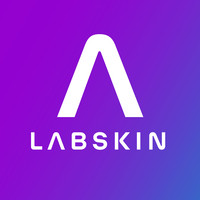China on Verge of Skin Microbiome Explosion
 The Skin Microbiome is the collective term for the bacteria, fungi and viruses that live on our skin. The skin is the human body’s second largest organ in terms of surface area, exceeded only by the intestines. It contains seven layers of tissue and guards the muscles, bones, ligaments and internal organs.
The Skin Microbiome is the collective term for the bacteria, fungi and viruses that live on our skin. The skin is the human body’s second largest organ in terms of surface area, exceeded only by the intestines. It contains seven layers of tissue and guards the muscles, bones, ligaments and internal organs.There are approximately 1000 different bacterial species and up to eighty different fungi species living on our skin. Some of these species are already familiar as they are also present in our gut microbiome and include the Staph, Strep and Candida species.
The skin microbiome is as individual to each person as a fingerprint. No two people can have the same microbiome as lifestyles, diet, location, ethnicity, etc all play a part in the makeup of the skin microbiome. Even the microbiome of an individual is different on various parts of their own body such as armpit, face, hands and feet. This is due to many factors such as weather exposure, heat, sweat production, work environment, etc.
Skin conditions such as eczema, acne, and rosacea are believed to be connected to a lack of diversity in the skin microbiome. Recent studies have shown for example, that individuals with eczema have a microbiome not found in individuals without. Society’s obsession with cleaning and hygiene – while obviously one of the key advancements in modern history and, of course, vital for survival – has also led to massive changes in the skin microbiome and harsher conditions for it to thrive upon. All the above skin conditions, as well as others, have seen increased numbers of people reporting symptoms
Chinese market Trends
The Global probiotic or microbiome-friendly market for cosmetics is expected to grow exponentially over the coming years. While the United States is the current consumer leader globally with the EU leading the research just behind, the Asia Pacific market is on the verge of exploding and analysts expect China to have the largest market by 2025.
The Chinese market has many unique attributes that are rarely found in other parts of the world. The young middle-class affluent demographic is enormous compared to parts of the west – largely supported by the parents and grandparents of this generation and the smaller family sizes. In economic terms, they have a lot more disposable income available to them therefore are willing to spend more on beauty, technology, etc than their western counterparts. With the massive size of the e-commerce market throughout China, more information and more choices are now available to those even in rural areas. The Chinese ecommerce market is worth almost $2 trillion and expected to grow another 20% in 2020.
The keywords “Health” and “Beauty” are the most commonly searched words across all of Chinas’ e-commerce platforms, indicating just how much potential there is in China for cosmetic and skincare brands. The Skin Microbiome is a new concept in China yet matches the already popular concept of personalised or bespoke cosmetics that the Chinese market are willing to invest in. Larger multinational brands such as Lancome and La Roche Posay are beginning to advertise and educate the Chinese consumer about the Skin Microbiome in a similar way as Dove are doing in the US and EU.
There is a trend in the Chinese market that show most consumers who purchase skincare products and cosmetics are looking for products that carry certain claims – claims that products intending to protect and enhance the Skin Microbiome fall under. As consumers gain more knowledge of the skin microbiome, much in the same way as the gut microbiome was introduced, the pressure will build on all brands to take advantage of the emerging trend.
China’s Cosmetics Regulations
The Chinese regulations surrounding cosmetics are very different to those in Western countries. Although there has been a massive global movement against Animal Testing in cosmetics, China still hold a law in place for any cosmetic product not manufactured in China. Any cosmetic or skincare product that wants to be sold on the Chinese market must have undergone safety testing through animal-tests. There is a lot of work ongoing to change this law, which began with China agreeing to halt animal testing in 2012 for any product manufactured there, and hopefully will see the law changed in the next couple of years for all other cosmetics to come under the same regulatory framework.
Labskin’s ethical Human Skin Equivalent model for testing of cosmetics and skincare products is the closest to real human skin that is available. It has a better accuracy rate than animal testing, and with its ability to mimic the skins microflora is well placed to help these brands to enter the Chinese market with their Skin Microbiome- enhancing and protecting products.
For more information got to www.labskin.co.uk/skin-model
To get in contact with our R&D or Sales departments please email info@labskin.co.uk





















